Fashioning Architecture
Subversive Structures
Boston, MA
Studio J. Jih, Summer Research
Research Supervisor: J. Jih
Can architecture follow fashion in democratizing the fastener?
In the centuries following the Renaissance, fashion was mainly the domain of nobility who had access to the maids, valets, and dressmakers. Twentieth century fashion has increasingly incorporated the use of fast and accessible fasteners, from buttons to zippers to velcro. These modernizations highlight a trend of increasing agency over one’s own clothing. Could this agency be expanded to the scale of architectural assembly?

View under canopy of dots


Can frit be both decorative and structural?
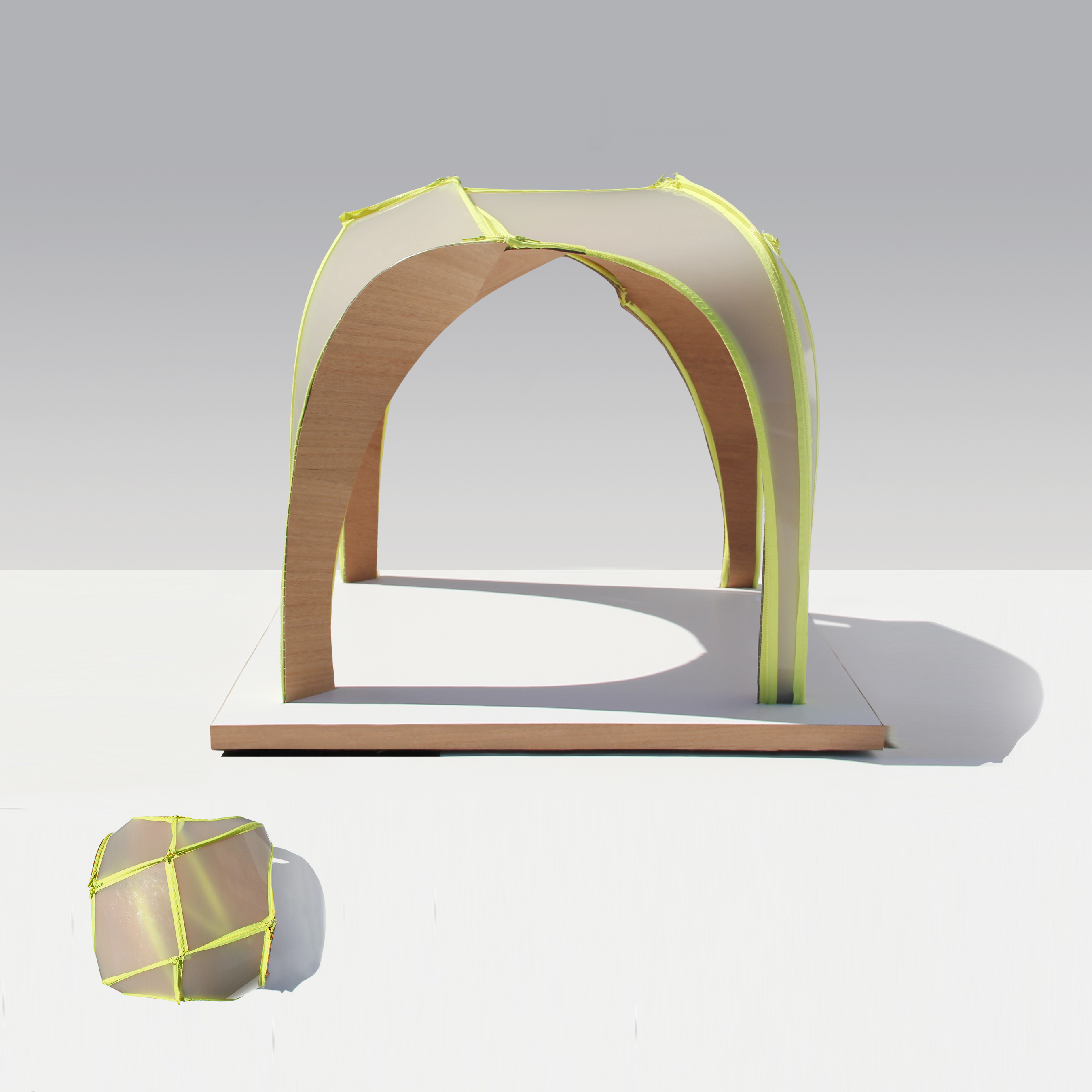
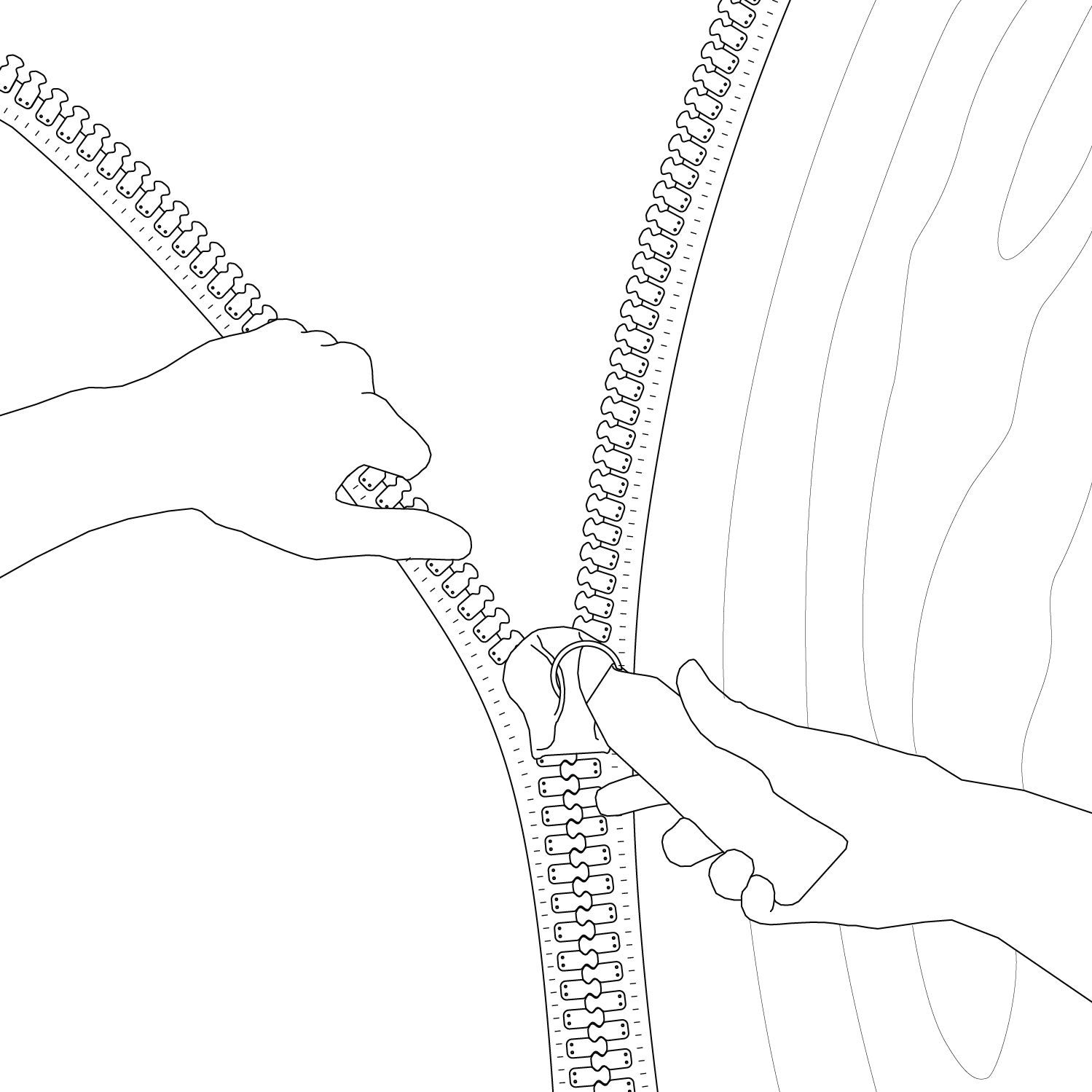
What if construction was as simple as a zipper pull?
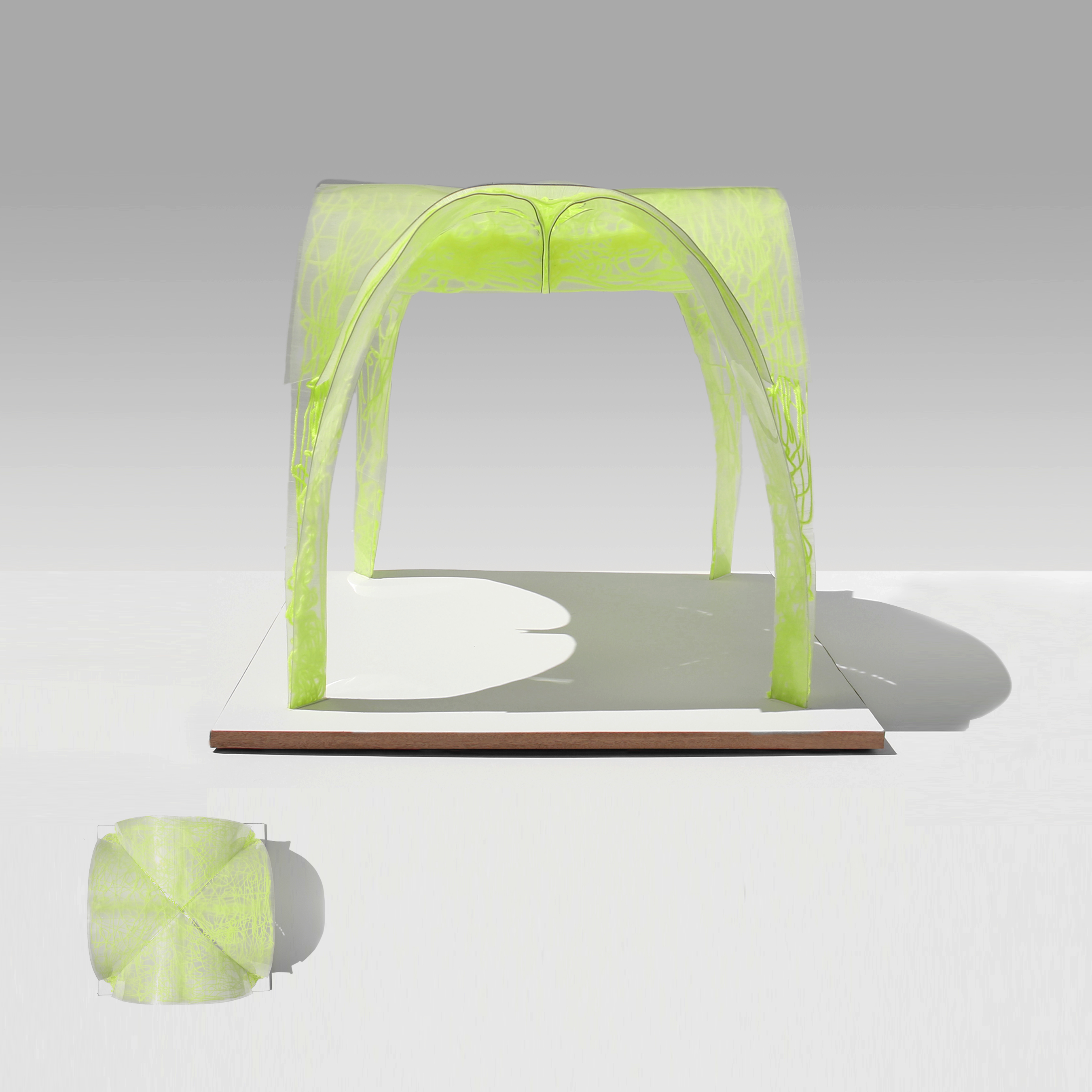
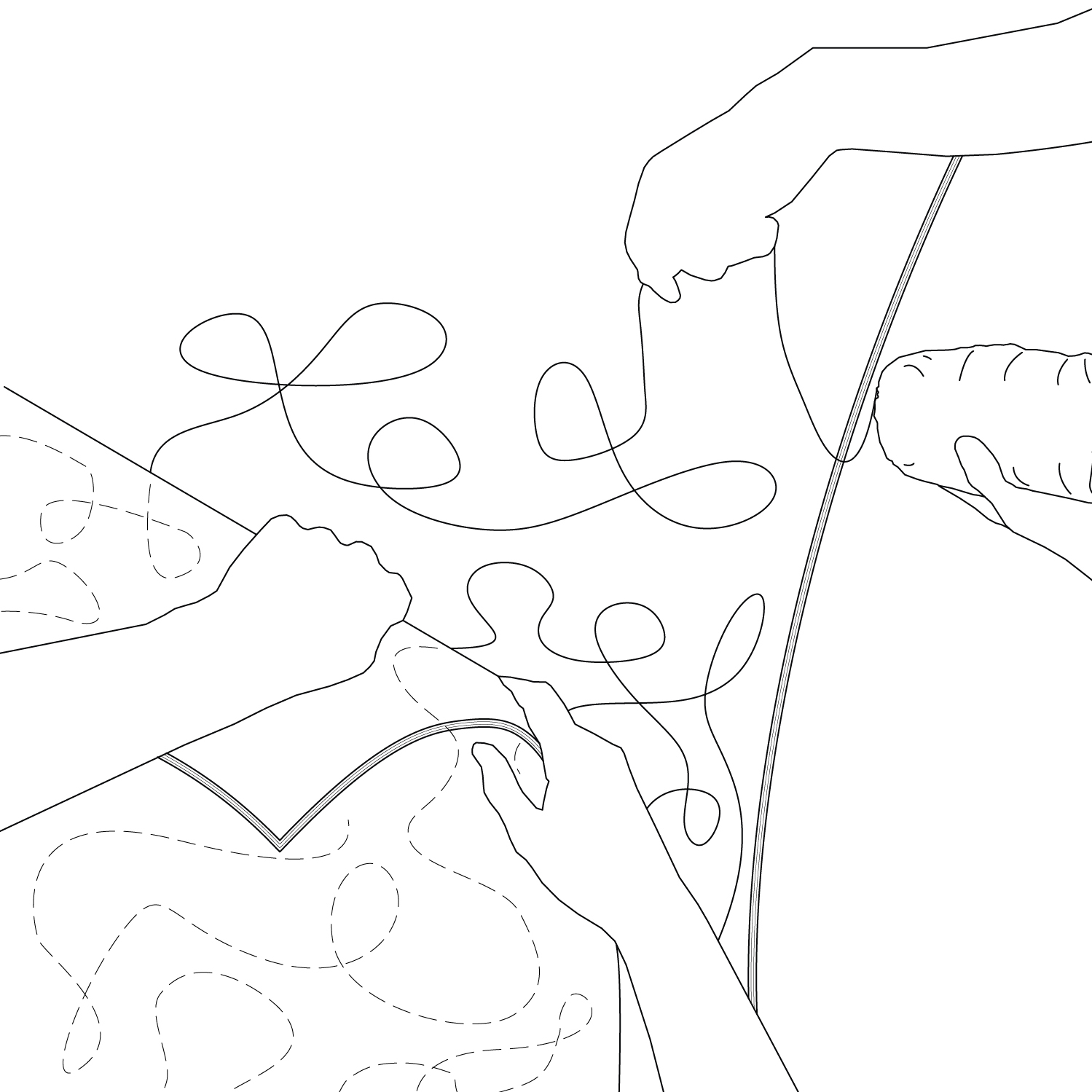
Could adhesive be reusable?



Structural Frit Leg Detail
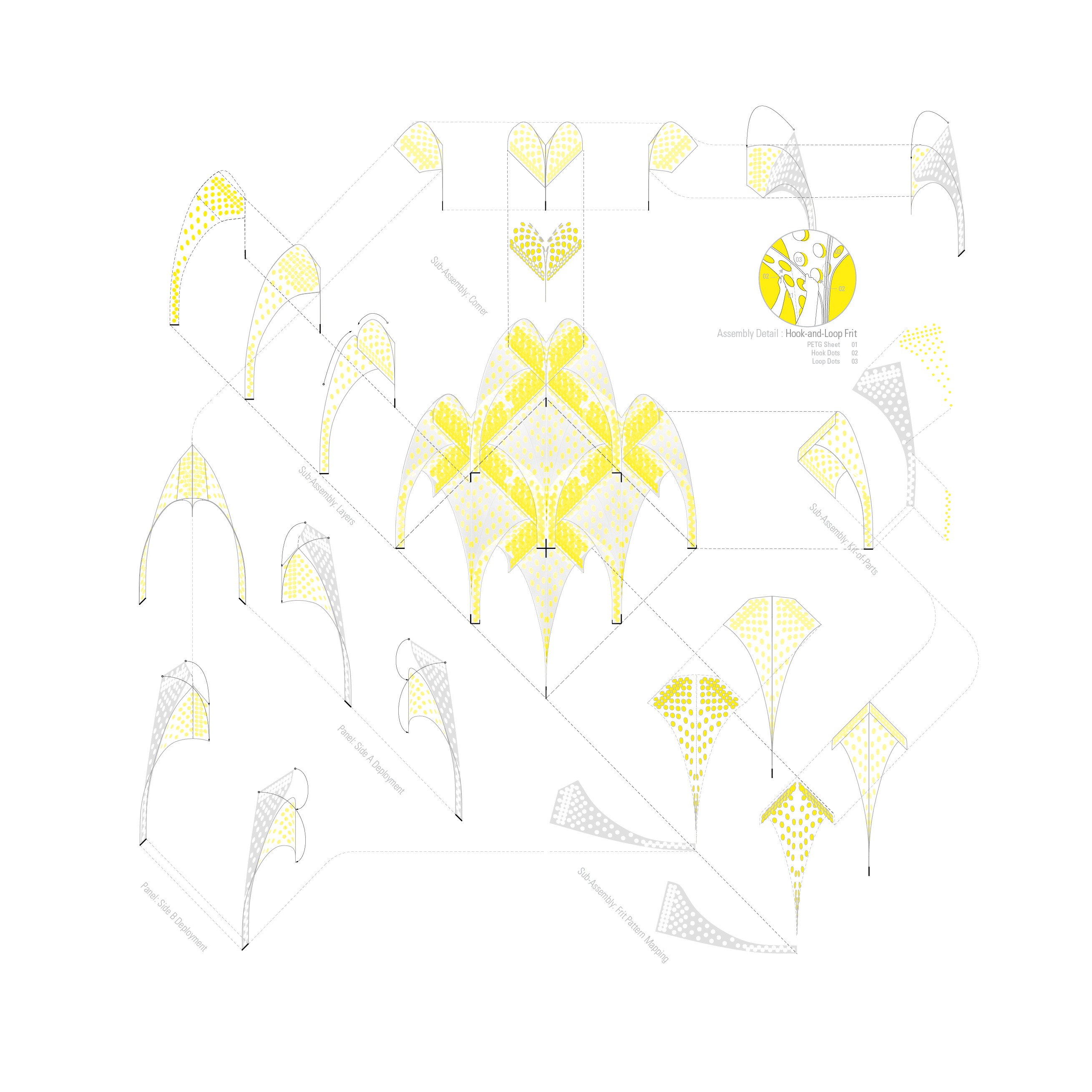 Assembly: Frit Vault
A frit pattern of velcro dots is applied to the flat surface. Hook and loop layers are alternated to allow panels to build up to a load-bearing thickness. Density of the dots is conentrated in legs and beams which reinforce the vault intersections. Flat panels are bent into shape and then joined by pressing into the adjacent panels.
Assembly: Frit Vault
A frit pattern of velcro dots is applied to the flat surface. Hook and loop layers are alternated to allow panels to build up to a load-bearing thickness. Density of the dots is conentrated in legs and beams which reinforce the vault intersections. Flat panels are bent into shape and then joined by pressing into the adjacent panels.
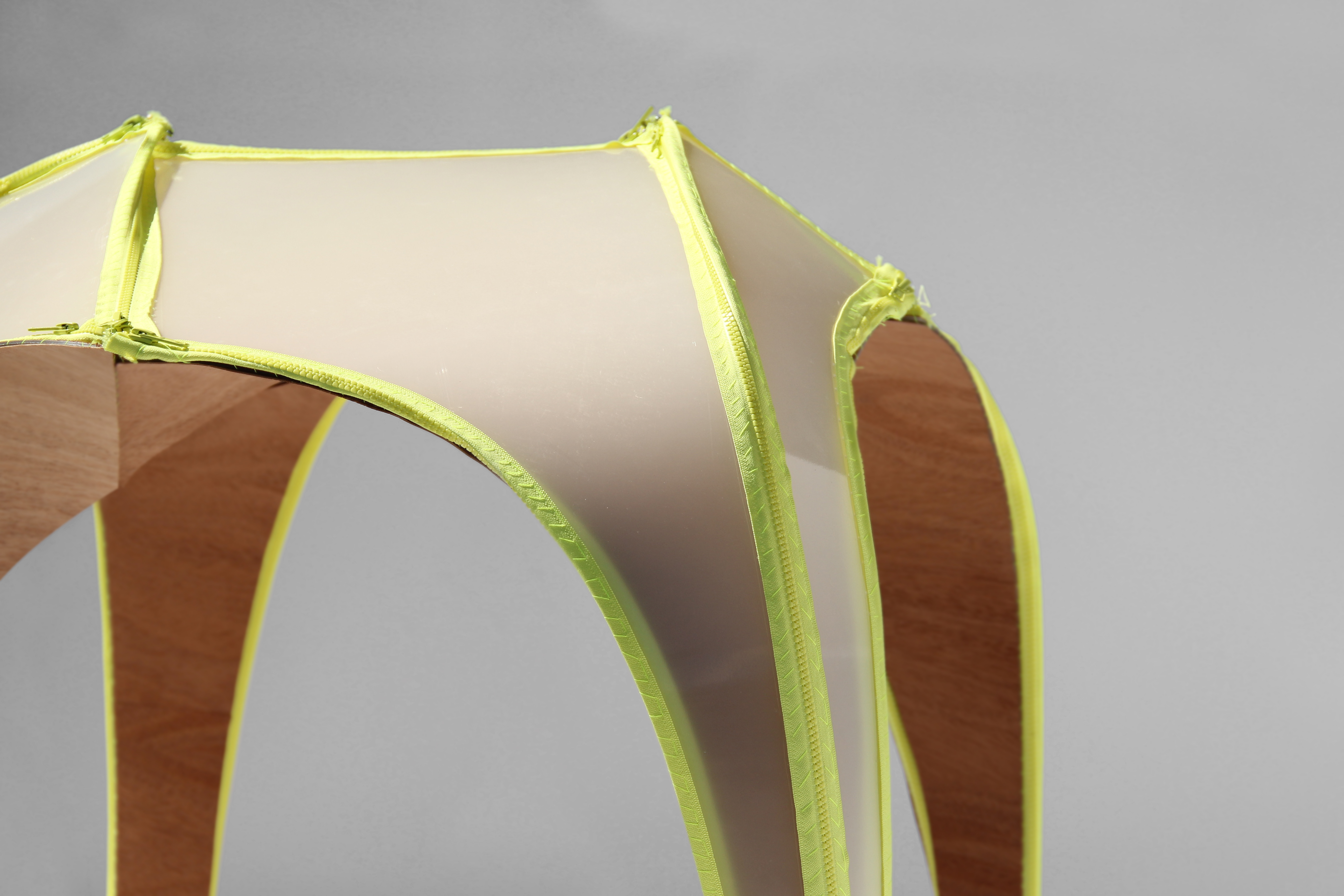
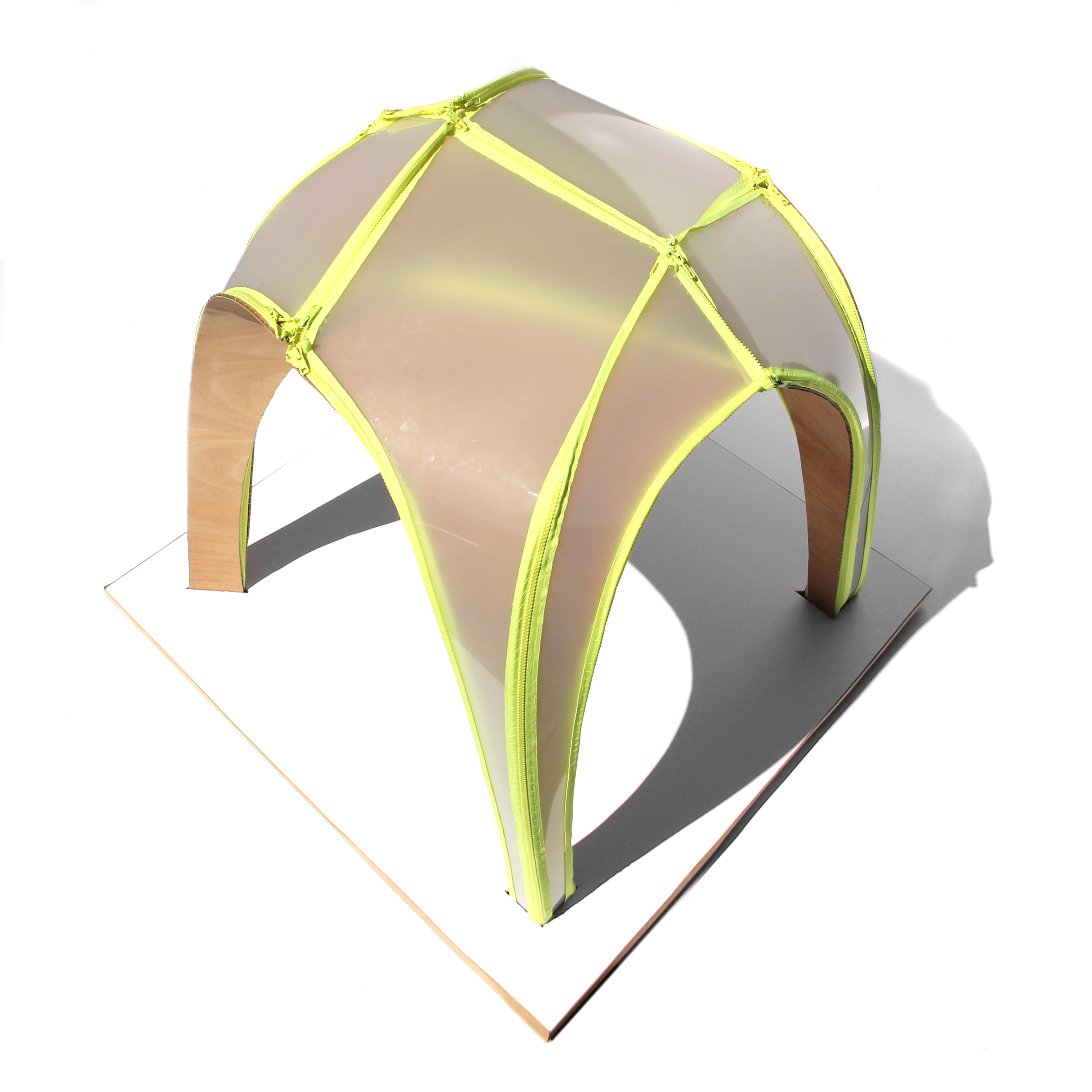

Assembly: Zipper Vault
Strips of zipper teeth are stitched into the edge of flat profiles of polypropylene and wood veneer. The fabric flaps ensure a degree of flexibility in the edge tolerance and assist the zipping motion. To assemble the vault, alternating segments of plastic and wood layers are zipped together with an upward motion, from the ground to the top of the vault.

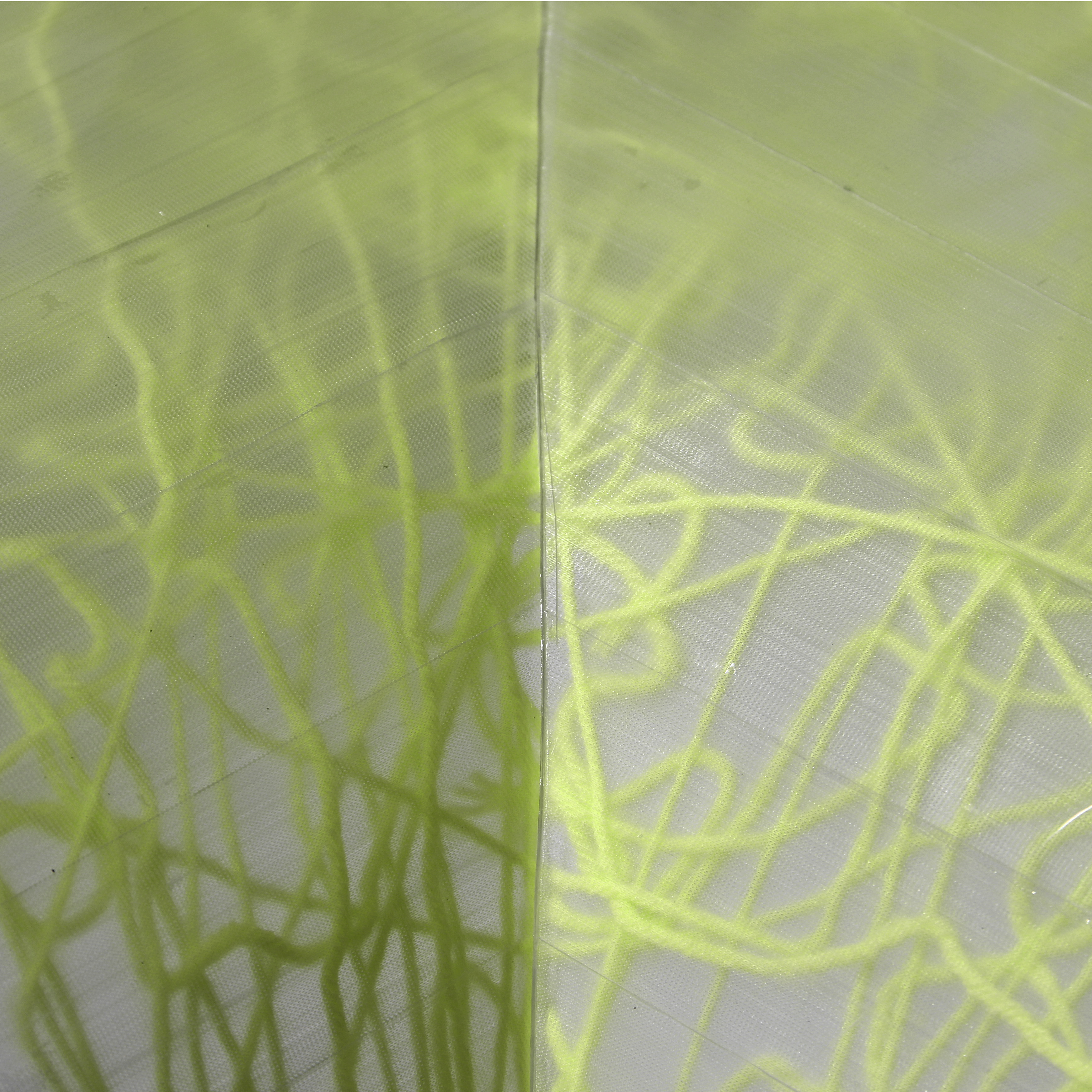
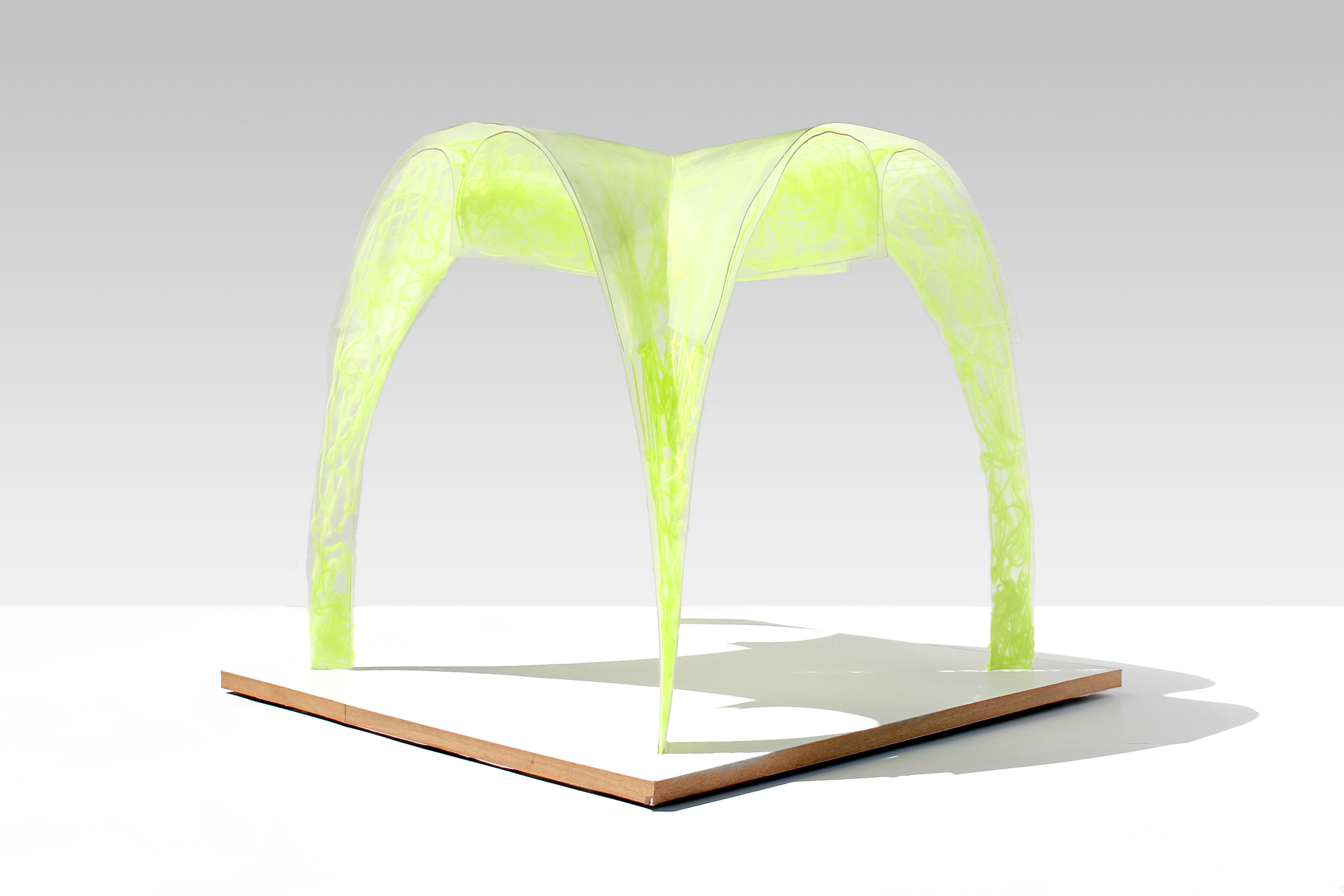
Oblique View
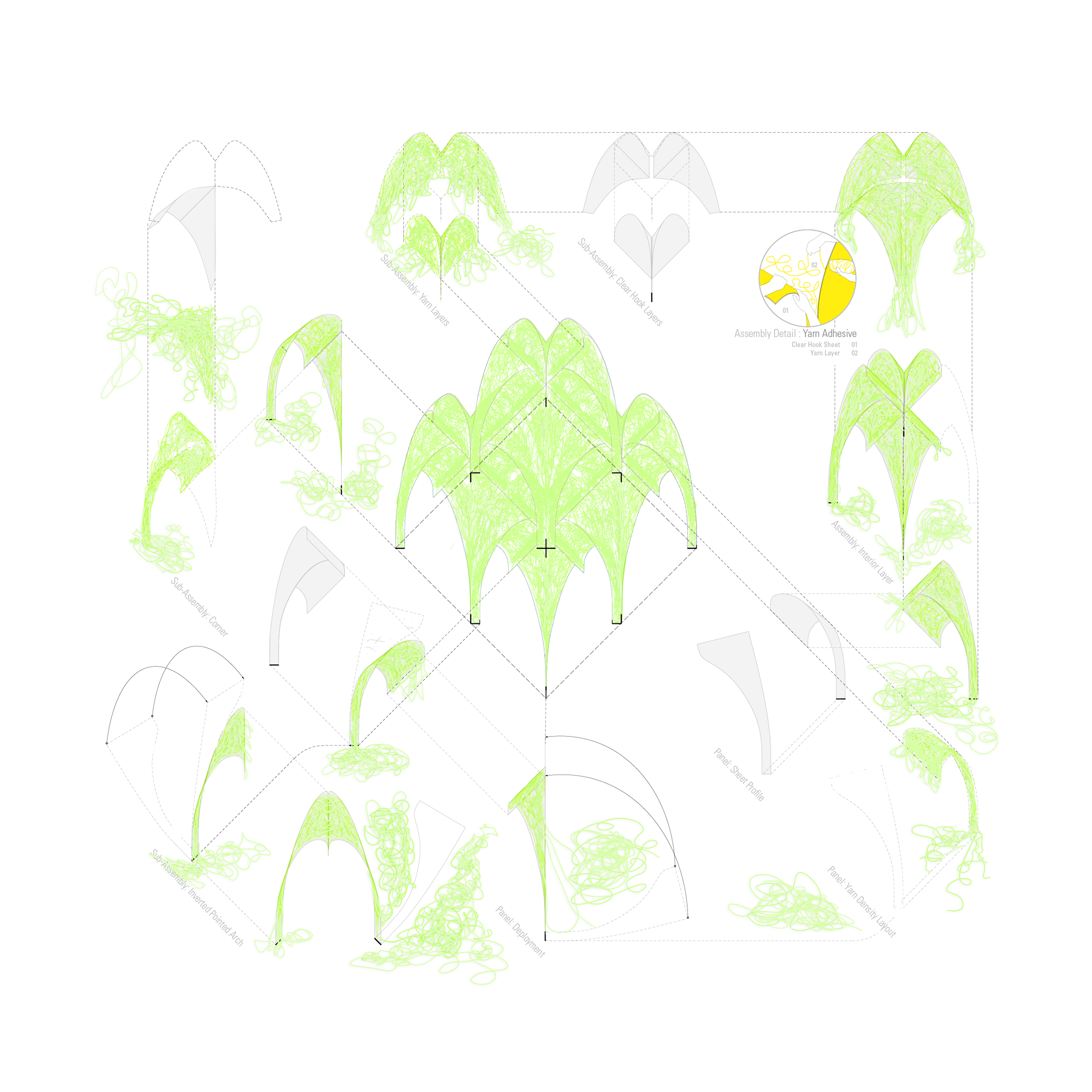 Assembly: Tangle Vault
Assembly: Tangle VaultPETG profiles are laminated with adhesive backed hook tape. Just like velcro, the hook tape catches loose fabric and fibers. Unspooling yarn onto the hooks, the yarn tangles against the surface. When laminated between two layers, the yarn acts like a layer of glue, behaving particularly strongly in resisting lateral forces. However, the yarn is easily detached by pulling away perpendicular from the surface, effectively behaving as re-usable adhesive.